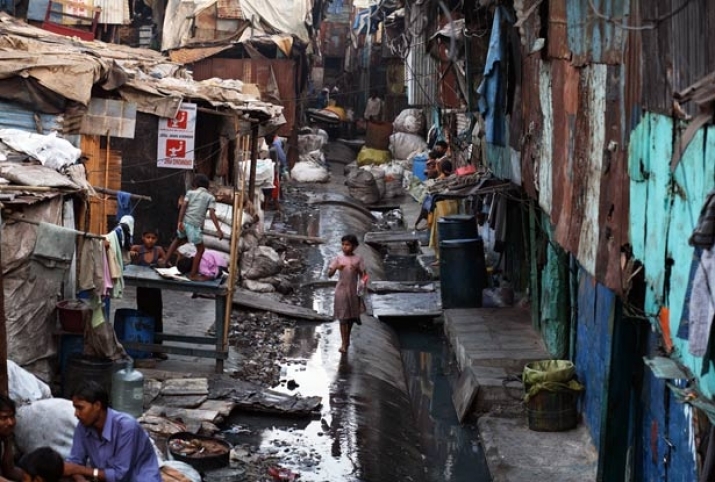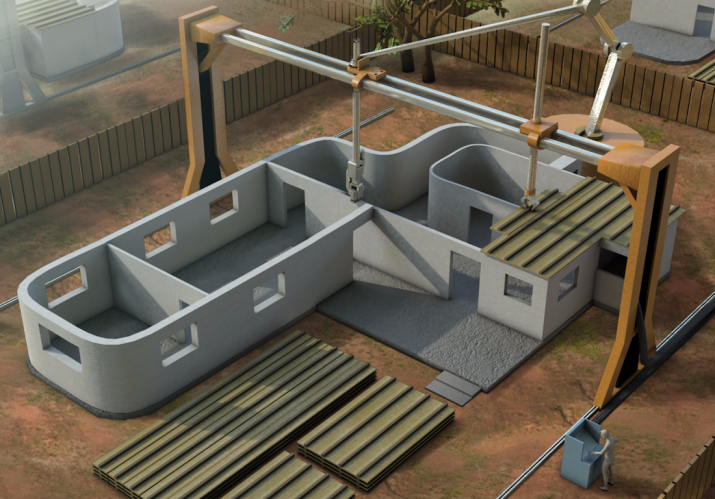NEWS
3D Printing Technology Offers Potential Solution to Housing Crisis
 The WHO estimates that 863 million people were living in slum conditions as of 2014, a figure set to rise with an increasing proportion of the world's population living in urban areas. From nationalgeographic.com
The WHO estimates that 863 million people were living in slum conditions as of 2014, a figure set to rise with an increasing proportion of the world's population living in urban areas. From nationalgeographic.comAdditive manufacturing, popularly known as 3D printing, is a nascent next-generation manufacturing technology poised to revolutionize a multitude of industries by offering the ability to cheaply and quickly “print” three-dimensional objects from digital files. Indeed, 3D printers are already used to synthesize everything from toys to clothing to mechanical components, so why not an entire building? Behrokh Khoshnevis, professor of engineering at the University of Southern California (USC), has developed a technology to do just that, asserting his “Contour Crafting” process can fabricate an entire 230-square-meter house in less than a day, offering a potential source of livable, easy-to-produce, low-cost housing.
According to the World Health Organization (WHO), 2008 marked a major turning point in human history, with a majority of the world’s population living in urban areas for the first time. The WHO estimated that 54 per cent of the world’s population lived in urban areas, as of 2014, an increase of more than a billion people since 2000, with about 863 million of those people living in slum conditions.
Prof. Khoshnevis, director of the USC’s Center for Rapid Automated Fabrication Technologies, is the creator of Contour Crafting, a technology he believes may offer a solution to this crisis. The automated construction system utilizes a giant robotic 3D printing gantry to precision fabricate low-cost, livable housing, including conduits for utilities such as electricity and water, in a matter of hours.
“Somehow, we have to address the issue of shelter, which is at the base of the pyramid of needs,” says Prof. Khoshnevis. “People who don’t have good shelter are desperate people—people who also don’t have social security, education. There’s a lot of things that go with that. The place to start is [to] improve their shelter conditions.” (The New York Times, Tech Insider)
 Contour Crafting utilizes a giant robotic 3D printing gantry to precision fabricate low-cost, livable housing, including conduits for utilities such as electricity and water, in a matter of hours. From techinsider.io
Contour Crafting utilizes a giant robotic 3D printing gantry to precision fabricate low-cost, livable housing, including conduits for utilities such as electricity and water, in a matter of hours. From techinsider.ioFabricating homes in this manner offers a host of benefits—it’s faster, cheaper, and less labor-intensive than traditional construction methods. There would be no need to transport prefabricated concrete slabs, for example, since all the required materials would be prepared on site, while the automated nature of the process would obviate the need for large construction teams. Using a quick-setting concrete-like material, the computer-controlled printing gantry extrudes the house’s basic structure layer by layer, topped off with floors and ceilings set in place by crane, with nearly zero waste once construction is completed.
“At a construction rate of about 20 seconds per square foot of wall (three minutes per square meter), a modest-sized 2,500-square-foot home could be constructed in about 18 or 19 hours with a workforce of about four people,” according to USC’s Contour Crafting. “We’re currently developing the technology to ensure that not just walls are printed, but infrastructure such as water and sewage pipes as well.” (Contour Crafting)
While his technology is still in development, pending regulatory and funding issues, Prof. Khoshnevis is optimistic that within the next two years an entry-level version of the Contour Crafting machine will be available on the market, offering a potential affordable solution for the homeless, those living in poverty, and the victims of natural disasters.
“In the case of natural disaster and war, a lot of people ask, ‘what's the advantage of building a house in one day?’ said Prof. Khoshnevis. “A lot of people lose their houses in one second if there’s an earthquake, flooding, whatever. Definitely those people want their houses in one day.” (Tech Insider)
Using a quick-setting concrete-like material, the computer-controlled printing
gantry extrudes the house’s basic structure layer by layer. From techinsider.io
Yet Prof. Khoshnevis hasn’t restricted his vision of cheap, easy-to-build habitation to this world; he is also working with NASA in the hope that his technology can also be used to build structures on the moon from materials available there, with the longer-term goal of creating a blueprint for making human habitation on Mars a possibility.
See more
This giant robot could help solve the housing crisis (Tech Insider)
Behrokh Khoshnevis wants to 3D print houses with Contour Crafting on earth and on the moon (www.3ders.org)
Future House: 3-D Printed and Ready to Fly (The New York Times)
Contour Crafting
Center for Rapid Automated Fabrication Technologies
Global Health Observatory (GHO) data (World Health Organization)














